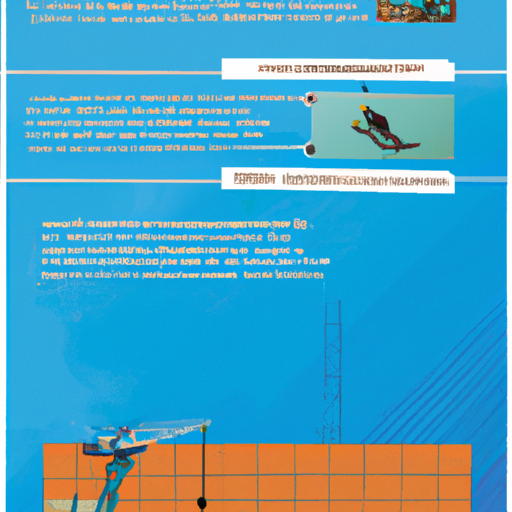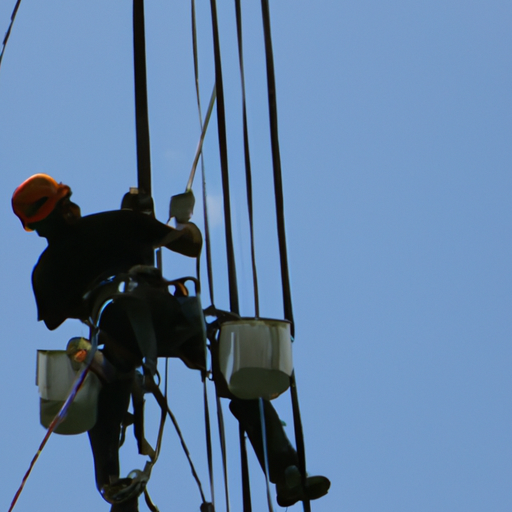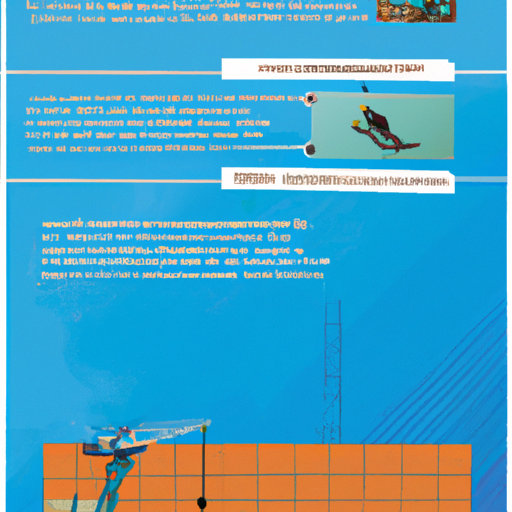So, you’re curious about the difference between bucket work and climbing work? Well, you’ve come to the right place! In this article, we’re going to dive deep into these two types of work and explore the distinctions between them. Whether you’re a professional in the industry or simply someone interested in learning, we’ve got all the information you need to understand the nuances of bucket work and climbing work.
In the next paragraphs, we’ll discuss the specific tasks involved in bucket work and climbing work, their benefits and challenges, and how they are used in various industries. By the end of this article, you’ll have a clear understanding of the differences between these two types of work and the unique skills they require. So, without further ado, let’s get started and delve into the fascinating world of bucket work and climbing work!
Introduction to Bucket Work and Climbing Work
Definition of Bucket Work
Bucket work refers to any type of work that is performed using a bucket attached to a mechanical arm or crane. The bucket, also known as a boom or aerial lift, provides workers with a platform from which they can safely perform various tasks at height. Common examples of bucket work include tree trimming, exterior building maintenance, and street light repairs.
Definition of Climbing Work
Climbing work, on the other hand, involves physically ascending and descending structures or natural formations without the aid of mechanical equipment. This can include activities such as rock climbing, mountaineering, tower and antenna installation, and high-rise window cleaning. Climbing work requires individuals to rely on their physical strength and agility, as well as the use of specialized equipment such as ropes, harnesses, and carabiners.
Advantages of Bucket Work
Increased Safety
Bucket work offers a higher level of safety compared to climbing work. The use of mechanical equipment provides a stable and secure platform for workers, reducing the risk of falls or accidents. Safety features such as guardrails, harnesses, and interlocks further enhance the safety of bucket work, making it an ideal choice for tasks that involve working at height.
Efficiency and Speed
Bucket work allows for increased efficiency and speed when compared to climbing work. With the ability to reach high elevations quickly, workers can perform tasks in a shorter amount of time, resulting in increased productivity. This is particularly beneficial for jobs that require a large number of tasks to be completed within a limited timeframe, such as exterior building maintenance or street light repairs.
Ability to Reach High Elevations
One major advantage of bucket work is the ability to reach high elevations that would be difficult or impossible to access through climbing alone. The extendable booms or cranes used in bucket work can reach heights of up to several stories, allowing workers to perform tasks at elevated locations with ease. This is particularly beneficial for tasks such as tree trimming or exterior painting, where access to high elevations is crucial.

Disadvantages of Bucket Work
Limited Access in Confined Spaces
While bucket work offers many advantages, it does have some limitations. One such limitation is the limited access in confined spaces. The size and shape of the bucket or boom can restrict access to tight or narrow areas, making it unsuitable for certain jobs that require maneuvering in tight spaces. In such cases, climbing work may be a more viable option as it allows for greater flexibility and mobility in confined spaces.
Potential Restrictions on Movement
Bucket work can also be restricted by obstacles such as trees, buildings, or other structures that may obstruct the movement of the boom or bucket. This can limit the range of motion and make it difficult for workers to access certain areas. Climbing work, on the other hand, allows individuals to navigate around obstacles and access hard-to-reach locations more easily.
Dependency on Equipment
Another disadvantage of bucket work is the dependency on mechanical equipment. In the event of equipment failure or malfunction, work may come to a halt until the issue is resolved. This can result in delays and potentially impact productivity. In contrast, climbing work provides individuals with greater independence from equipment, allowing them to continue working even in the absence of machinery.
Advantages of Climbing Work
Flexibility and Mobility
Climbing work offers a higher degree of flexibility and mobility compared to bucket work. With the use of ropes, harnesses, and other climbing gear, individuals can navigate uneven or challenging terrain with ease. This makes climbing work an ideal choice for tasks that require access to hard-to-reach or remote locations, such as rock climbing or mountaineering.
Ability to Work in Confined Spaces
Unlike bucket work, climbing work allows individuals to work in confined spaces and tight areas. The ability to move freely and independently allows climbers to explore and access areas that may be inaccessible to bucket work. This can be particularly advantageous for tasks that involve inspecting or repairing structures in narrow or confined spaces.
Independence from Equipment
Climbing work offers individuals a greater degree of independence from mechanical equipment. The reliance on one’s physical strength and ability allows climbers to continue working even in the absence of machinery or in the event of equipment failure. This can prove crucial in situations where there is limited or no access to mechanical equipment, such as remote mountaineering expeditions.

Disadvantages of Climbing Work
Higher Risk of Accidents
Climbing work inherently carries a higher risk of accidents compared to bucket work. The reliance on physical strength and agility, as well as the use of specialized equipment, increases the potential for falls, injuries, and accidents. It is essential for climbers to undergo proper training, use appropriate safety measures, and adhere to strict protocols in order to minimize the risk of accidents.
Slower Work Pace
Due to the physical demands and inherent risks associated with climbing work, the pace of work is generally slower compared to bucket work. The need for climbers to carefully navigate the terrain, secure equipment, and ensure safety can result in a slower overall work pace. This can be a disadvantage for tasks that require quick completion, such as time-sensitive maintenance or repair jobs.
Limited Reach in High Elevations
While climbing work allows individuals to access and work in confined spaces, it has limitations when it comes to reaching high elevations. Unlike bucket work, climbers are typically limited by their physical capabilities and the length of their ropes. This can make it difficult for climbers to reach elevated heights, particularly in situations where bucket work would be more suitable.
Applications of Bucket Work
Tree Trimming and Pruning
Bucket work is commonly used in the field of arboriculture for tree trimming and pruning. The extendable boom allows workers to reach the uppermost branches of trees, making it easier to trim or prune dead or overhanging branches. This not only improves the health and aesthetics of trees but also ensures the safety of surrounding structures and pedestrians.
Exterior Building Maintenance
When it comes to maintaining the exterior of buildings, bucket work provides an efficient and safe method for tasks such as window cleaning, painting, and façade repair. The versatility of the bucket allows workers to access elevated areas without the need for scaffolding or other temporary structures. This reduces the time and cost associated with traditional building maintenance methods.
Street Light Repairs
Bucket work is also extensively used for street light repairs. The ability to reach high elevation quickly and safely makes it an ideal choice for replacing light bulbs, repairing wiring, or performing routine maintenance on street lights. This ensures the proper functioning of street lights, enhancing visibility and safety for both pedestrians and motorists.
Applications of Climbing Work
Rock Climbing and Mountaineering
Climbing work finds its application in recreational activities such as rock climbing and mountaineering. Climbers often traverse natural rock formations, cliffs, or mountains, using specialized equipment such as ropes, harnesses, and climbing shoes. This allows them to challenge themselves physically and mentally while enjoying the beauty of nature.
Tower and Antenna Installation
Climbing work is essential for tower and antenna installation in areas where mechanical equipment is not viable or unavailable. Technicians climb tall structures such as communication towers or rooftops to install, repair, or conduct maintenance on antennas and other equipment. The ability to climb safely and efficiently enables technicians to carry out their work effectively.
High Rise Window Cleaning
In the realm of building maintenance, climbing work is also used for high rise window cleaning. Climbers utilize ropes and harnesses to access the exterior of tall buildings, ensuring that windows remain clean and free from debris. This method allows for thorough cleaning, even in areas that may be difficult to reach using traditional cleaning methods.
Training and Safety Procedures
Certifications and Qualifications
Both bucket work and climbing work require individuals to undergo proper training and obtain relevant certifications and qualifications. Bucket operators must receive training on the safe operation of the machinery, including the use of controls, emergency procedures, and maintenance protocols. Climbers, on the other hand, need to learn proper climbing techniques, rope management, and rescue procedures. Certifications such as the International Powered Access Federation (IPAF) certification for bucket work and the Single Pitch Award (SPA) for climbing work can help ensure that individuals are trained and competent in their respective fields.
Equipment Inspection and Maintenance
Regular inspection and maintenance of equipment are crucial for both bucket work and climbing work. Operators must inspect the bucket, arm, and other mechanical components for any signs of wear, damage, or malfunction. Climbers need to inspect and maintain their ropes, harnesses, carabiners, and other climbing gear to ensure they are in good working condition. By regularly inspecting and maintaining equipment, the risk of accidents and equipment failure can be greatly reduced.
Fall Protection Measures
Fall protection is of utmost importance in both bucket work and climbing work. Operators must use appropriate fall protection measures such as harnesses, guardrails, and lanyards to prevent falls or provide protection in the event of a fall. Climbers must also use proper fall protection equipment, including harnesses and helmets, and adhere to established safety protocols such as using belay systems and performing buddy checks. Adequate fall protection measures help protect workers from potentially life-threatening falls and ensure a safe working environment.
Cost Factors
Equipment Costs
Bucket work typically requires the use of expensive mechanical equipment such as buckets, cranes, or aerial lifts. The cost of purchasing or renting this equipment can be a significant factor to consider when planning a project. On the other hand, climbing work relies on relatively less expensive equipment such as ropes, harnesses, and carabiners. However, the cost of specialized climbing gear and maintenance should also be taken into account.
Labor Costs
Labor costs can vary between bucket work and climbing work. Bucket work often requires a crew consisting of an operator and several workers to perform tasks efficiently and safely. This can result in higher labor costs, particularly for projects that require extensive work or multiple tasks. Climbing work, on the other hand, may require fewer personnel, reducing labor costs. However, the expertise and experience of climbers often command higher hourly rates.
Insurance and Liabilities
Insurance and liabilities are important considerations for both bucket work and climbing work. The use of mechanical equipment in bucket work may necessitate insurance coverage for liability, property damage, and worker’s compensation. Climbing work also carries its own set of risks, requiring climbers and companies to have appropriate insurance coverage to protect against accidents, injuries, or property damage. Insurance premiums and liabilities should be factored into the overall cost of the project.
Conclusion
In conclusion, bucket work and climbing work are two distinct methods of performing tasks at height. While bucket work offers increased safety, efficiency, and the ability to reach high elevations, it may be limited in accessing confined spaces or obstacles. Climbing work, on the other hand, provides flexibility, mobility, and independence from equipment but carries a higher risk of accidents and slower work pace.
The choice between bucket work and climbing work depends on the nature of the task at hand, the access requirements, and the desired level of safety and efficiency. Considerations such as training, safety procedures, cost factors, and application requirements should be taken into account when deciding which method to employ. By understanding the distinctions between bucket work and climbing work, individuals and companies can make informed decisions to maximize productivity while minimizing risk.




